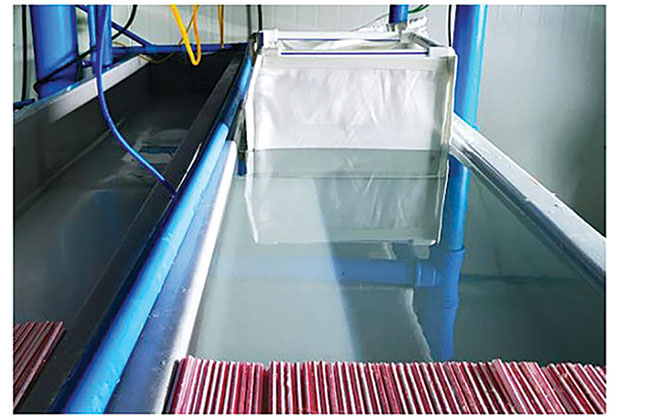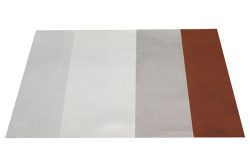
News & Views
Fish Health
Technology
Mowi Chile uses Garware fabric against sea lice
December 9, 2021 By Hatchery International Staff
 Test channel with Garware fabric inside to evaluate the permeability of the fabric cage, observing 99.6 per cent retention of larvae.
Photo: Mowi Chile/Garware Technical Fibres Ltd.
Test channel with Garware fabric inside to evaluate the permeability of the fabric cage, observing 99.6 per cent retention of larvae.
Photo: Mowi Chile/Garware Technical Fibres Ltd. Mowi Chile’s Huenquillahue research centre has been testing a high-quality fabric by Garware Technical Fibres Ltd. as a mechanical barrier against sea lice (Caligus rogercresseyisea) larvae.
The Garware X12 cloths are being used in skirt as a mechanical barrier in its salmon farming centres. The meshes were tested by means of sieves for the forced passage of the water flow with the addition of larvae in the the nauplius stage (I-II) and copepodites.
The testing evaluated three aspects: retention capacity of C. rogercresseyi larvae; estimation of the percentage of entry of larvae at different current speeds, and with fish to see the fixation of the copepodites that manage to pass through the fabric.
The study was carried out by the Austral University of Chile and found that the Garware fabric blocked 99.6 per cent of the larvae of Nauplii, and 99.7 per cent of the larvae of Copepoditos, so that they do not enter the cage.

In each case, the amount of water used was 340 liters with 3,700 larvae per test, a total of more than 133,800 larvae, where a flow of water was applied at current speeds of 0.5, 2 and 3.5 cm * s-1.
“The skirts for the prevention of infestation are a physical barrier that surrounds the fish tank cage, based on the X12 fabric that allows the water to flow, preventing the entry of lice. This allows 80 times more water flow than a common fabric for these purposes,” explained Marcos Jofré, business associate of Garware Technical Fibres.
“It is a non-pharmacological product, as part of the strategies to reduce the use of drugs, whose field experience shows a decrease in the frequency of baths of up to 50 per cent, with a reduction of lice of up to 60 per cent.”
Print this page
Advertisement
- From the Editor: For a better future
- Citric acid and phytase supplementation on canola meal for rohu fingerlings





